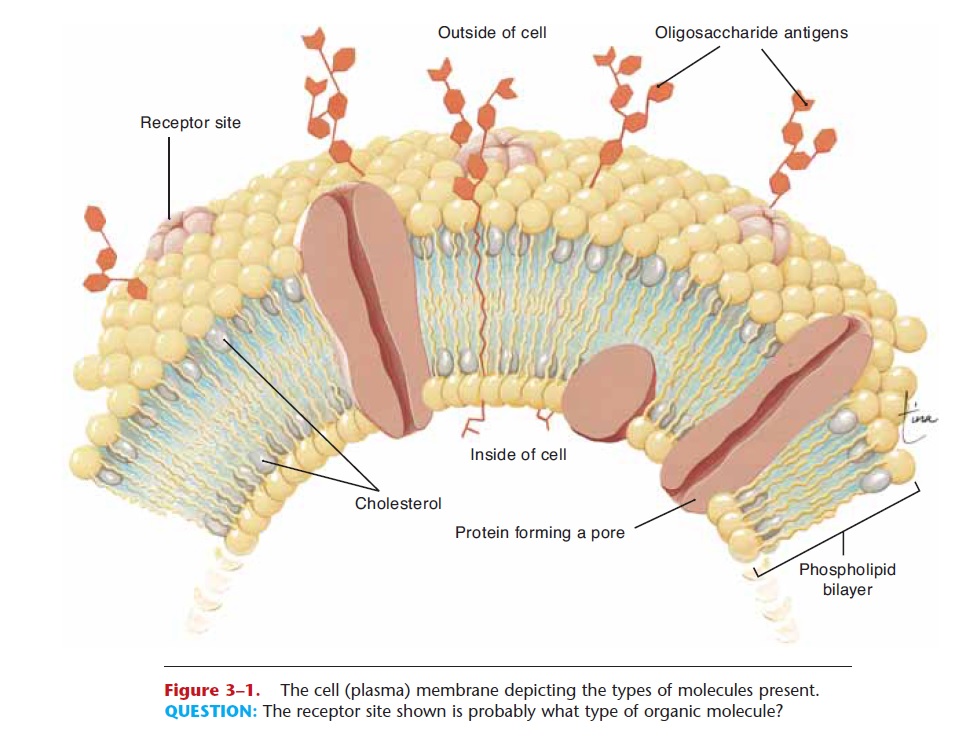Chapter: Essentials of Anatomy and Physiology: Cells
Cell Membrane

CELL MEMBRANE
Also called the plasma membrane, the cell mem-brane is made of phospholipids, cholesterol, and proteins. The arrangement of these organic molecules is shown in Fig. 3–1. The phospholipids are diglyc-erides, and form a bilayer, or double layer, which makes up most of the membrane. Phospholipids permit lipid-soluble materials to easily enter or leave the cell by diffusion through the cell membrane. The presence of cholesterol decreases the fluidity of the membrane, thus making it more stable. The pro-teins have several functions: Some form channels or pores to permit passage of materials such as water or ions; others are carrier enzymes ortransporters that also help substances enter the cell. Still other proteins, with oligosaccharides on their outer surface, are anti-gens, markers that identify the cells of an individual as “self.” Yet another group of proteins serves as recep-tor sites for hormones. Many hormones bring about their specific effects by first bonding to a particular receptor on the cell membrane, a receptor with the proper shape. This bonding, or fit, then triggers chemical reactions within the cell membrane or the interior of the cell.
Many receptors for other molecules are also part of cell membranes. These molecules are part of the chemical communication networks our cells have. An unavoidable consequence of having so many receptors for chemical communication is that some pathogens have evolved shapes to match certain receptors. For example, HIV, the virus that causes AIDS, just hap-pens to fit a particular surface receptor on our white blood cells. When the virus fits in, the receptor becomes a gateway into the cell, which begins the takeover of the cell by the virus.
Most often, however, the cell membrane is a bene-ficial structure. Although the cell membrane is the outer boundary of the cell, it should already be appar-ent to you that it is not a static or wall-like boundary, but rather an active, dynamic one. It is much more like a line of tollbooths than a concrete barrier. The cell membrane is selectively permeable; that is, certain substances are permitted to pass through and others

Figure 3–1. The cell (plasma) membrane depicting the types of molecules present.
QUESTION: The receptor site shown is probably what type of organic molecule?
are not. These mechanisms of cellular transport will be covered later. The cell membrane is of particular importance for muscle cells and nerve cells because it carries electrical impulses.

Related Topics